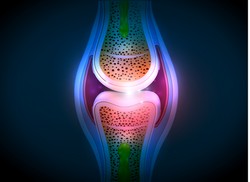Nature and tribology inspire new approaches
Human bodies are extremely complex, comprising moving assemblies of living tissue with a myriad of contacting interfaces. Recent scientific advances mean that the traditional engineering field of tribology, which studies friction, wear and lubrication, is now being applied to human tissue. The TRIBO-SURFING (Bio-inspired tribological interfaces) project developed healthcare and lifestyle products that interact with the human body and are based on living creatures (biomimetics). Since nature has already created systems for decreasing and increasing friction, these can serve as models for engineering solutions and provide shortcuts to the design of tribological interfaces with the same functions. Researchers explored four concepts related to the development of anti-frictional systems, including the biolubrication behaviour of synovial joint based on the combined effect of articular cartilage and synovial fluids. They also studied the tribological behaviour of human skin, the adhesion behaviour of cells on polymeric biomaterials and the lubrication of amphibious fish through the mucus cells and microridges on their skin. In addition, a concept related to the development of frictional systems was investigated for use in medical needles and sutures. This was the porcupine quill, which uses microscopic backward-facing deployable barbs containing hairs, which facilitate their penetration into tissue and make them difficult to remove. Scientists took the working principles behind these natural designs to develop new concepts for environmental and human-friendly tribological interfaces with improved functionality. TRIBO-SURFING used this knowledge to create surface/interface layers for reducing friction and wear of articular joint, joint implants and medical sutures. It was also used in the development of a friction increasing system for enhancing the interaction between vertebral pedicle screws and bone. In addition, project scientists produced artificial skin that mimics the mechanical property, frictional performance, and physical and chemical properties of human skin to create wound dressings.
Keywords
Tribology, friction, TRIBO-SURFING, tribological interfaces, biomimetics

